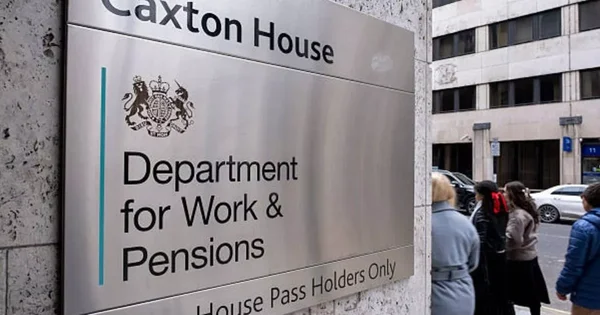
The Treasury is under fire from financial experts, pension providers, and lawmakers over confusion sparked by the government's recent overhaul of pension tax rules. The controversy centres on how lump sum withdrawals will be taxed now that the lifetime allowance (LTA), a limit on how much savers could build up in their pension pots without facing extra tax charges, has been scrapped.
The abolition of the LTA, announced in Chancellor Jeremy Hunt’s 2023 Spring Budget, was initially celebrated as a simplification measure. However, questions have now emerged about how lump sum withdrawals above a new cap will be treated, with warnings that the replacement rules could actually complicate the system further.
MPs from the Treasury Committee are seeking urgent clarification, calling the current proposals “unclear and inconsistent.” In particular, financial experts are concerned that the new lump sum allowance of £268,275, replacing the LTA test, may still expose savers to complex tax calculation, possibly affecting retirement planning across the country.
Background: What Was the Lifetime Allowance?
The lifetime allowance (LTA) was a cap on the total amount people could withdraw from their pension pots without triggering an additional tax charge. As of 2022/23, the LTA stood at £1,073,100. Withdrawals beyond this level were taxed at 25% or 55%, depending on how the funds were accessed.
When Chancellor Hunt scrapped the LTA in April 2023, he framed it as a move to prevent high earners, particularly NHS doctors, from retiring early to avoid tax penalties. However, this radical change required a comprehensive reworking of the rules surrounding pension lump sums, and critics argue that this has not been adequately delivered.
The New Lump Sum and Death Benefit Allowances
Instead of the lifetime allowance, the government has introduced a new framework, including:
- A lump sum and death benefit allowance set at £1,073,100, and
- A separate lump sum allowance of £268,275 (25% of the old LTA).
While the 25% tax-free portion remains, any withdrawals beyond this could now be taxed at marginal income tax rates, depending on the individual’s overall income in that tax year.
This approach is leaving many savers, particularly those who’ve already taken partial withdrawals, wondering how their remaining allowances will be calculated. The British Medical Association (BMA) and pension providers have raised concerns that the rules are far more complicated than intended.
Treasury Committee Calls for Clarity
The Treasury Select Committee, chaired by Harriett Baldwin MP, has pressed the government for urgent clarity.
In a strongly worded letter, Baldwin wrote: “We have heard significant concerns about the operation of the new pension lump sum rules. Ministers must provide clear guidance urgently to avoid confusion and unfair tax treatment.”
The committee has asked the Treasury to publish worked examples and guidance documents that show how the tax treatment will apply in real-world scenarios. Many in the industry warn that without these clarifications, savers might make poor decisions, especially those close to retirement or planning large withdrawals in the 2025/26 tax year.

Industry Experts Warn of Compliance Headaches
Financial advisers and pension providers have warned that the new rules could lead to higher costs and compliance risks.
“What was meant to be simplification has turned into a web of allowances,” said Tom Selby, Director of Public Policy at AJ Bell. “People now need to track historical withdrawals, understand three different allowances, and deal with new reporting requirements.”
The new rules also make it harder to predict the tax position on death benefits, which were previously tied to whether the deceased had exceeded their LTA. Under the new system, death benefits over £1,073,100 could be taxable, even for those who never drew from their pension.
Concerns Over NHS Staff and Public Sector Workers
One of the original motivations for removing the LTA was to retain senior doctors and consultants in the NHS workforce. However, if the new rules are more complicated and still create unexpected tax bills, that goal may backfire.
The British Medical Association has said it is “deeply concerned” that NHS workers could still be penalised unless the government ensures that transitional protections are clear and effective.
“We are reviewing the new allowances carefully and are pushing for clear, concise guidance for all our members,” a spokesperson said.

Conclusion
The government’s removal of the lifetime allowance was intended to simplify the pension system, but early signs point to the opposite. Instead of offering clarity, the new allowances and tax rules have triggered uncertainty and frustration, with calls mounting for urgent guidance.
The Treasury must address concerns raised by advisers, lawmakers, and pension savers alike. Without further clarification, the new rules could result in unexpected tax bills, administrative burdens, and a return to early retirements, the very issues the reform aimed to prevent.
In the months ahead, the government must work with the pensions industry to ensure a smooth transition, clear communication, and confidence among millions of savers relying on their pension pots for retirement security.
Frequently Asked Questions
What is the Lifetime Allowance (LTA) and why was it scrapped?
The LTA was a limit on tax-free pension savings, set at £1,073,100. It was scrapped in April 2023 to encourage professionals, especially NHS staff, to remain in the workforce.
What replaced the Lifetime Allowance?
The LTA was replaced by a lump sum and death benefit allowance (£1,073,100) and a separate lump sum allowance (£268,275), both of which impact how much can be withdrawn tax-free.
How will lump sum withdrawals be taxed now?
Withdrawals above the £268,275 tax-free limit are taxed at the individual's marginal income tax rate, rather than under the old 25%/55% LTA charges.
Will pension death benefits be taxed differently?
Yes. Death benefits over £1,073,100 may now be taxable, even if the individual hadn’t drawn from their pension during their lifetime.
Where can savers find out how these changes affect them?
The Treasury is being urged to release detailed guidance. In the meantime, pension providers and financial advisers can help savers understand the impact on their retirement plans.









